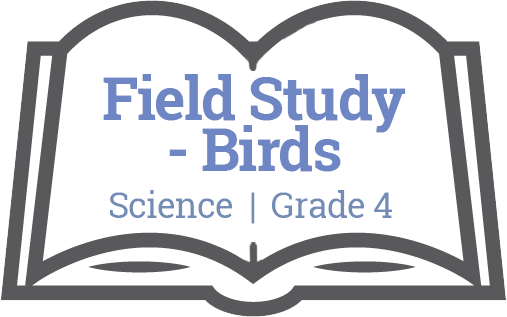
Unit Plan: Field Study – Birds
Science / Grade 4

Big Ideas
Science
- All living things sense and respond to their environment.
Essential Questions
Students will keep considering…
- How have I experienced ‘Senses’ at ODS? (e.g. how birds interact with each other and their environment)
- How am I connected to ‘Senses’ in my everyday life?
- How do birds communicate with each other?
- What interactions do you observe –between birds, and between birds and their environment?
- How do human impact birds and how can negative impacts be mitigated?
- How do living things sense and respond to their environment?
- What does using my senses in nature look, sound, feel, taste and smell like?
- How do my senses compare to the senses of other plants and animals?
- How is sensing and responding related to interdependence within ecosystems?
Evaluative Criteria
N/A
Monitoring Progress
Teacher will monitor progress:
Teachers can monitor progress through ongoing formative assessment including but not limited to:
- Class discussion
- Group and pair discussions
Resources
AUDIO
TEXTS
The Cornell Lab of Ornithology “Amazing Birds”
Binoculars – ideally one pair per student
Binocular Basics sheet
Cheakamus Centre Bird Study map
Laminated Cheakamus Centre Seasonal Field guides to birds
Laminated Indigenous Ways of Knowing Bird Cards
Legends: Keepers of the Earth – How Turtle Flew South for the Winter (p.157)
People of the Land: Legends of the Four Host First Nations – Smekw’á7 – The Great Blue Heron (p.75)
Squamish Legends: Seagull Raven and the Daylight Box
How the Robin Got Its Red Breast: A Legend of the Sechelt People – illustrated by Charlie Craigan.
Beetles: I notice, I wonder, It reminds me of
VIDEO
Reflection
How will teachers and their students reflect on and evaluate the completed project?
Teacher Reflection
- What aspects of the unit went well?
- What did students struggle with?
- What did you struggle with?
- What would you add/revise the next time you taught this unit?
- Were there any unintended outcomes?
- Were students engaged?
Downloads
Unit Overview
Subject
Science
Topic
Unit Overview
In this field study, students explore the ways that birds sense and respond to their environment. Students will examine the structures and functions of the body parts associated with each of the five senses. They will also investigate how birds respond to changes in their habitat. Students will explore the Indigenous worldview with respect to the symbolism for many of the common birds we will study as will as the recognition of the interconnectedness of all things and the responsibility to care for them Students will also go into the field and make observations of birds, using their own senses to see and hear the birds around them.
Grade
4
Unit Duration
1.5 to 2 hours
Related Big Ideas
N/A

The following resources are made available through the British Columbia Ministry of Education. For more information, please visit BC’s New Curriculum.
Big Ideas
The Big Ideas consist of generalizations and principles and the key concepts important in an area of learning. The Big Ideas represent what students will understand at the completion of the curriculum for their grade. They are intended to endure beyond a single grade and contribute to future understanding.
Core Competencies
 Communications Competency
Communications Competency
The set of abilities that students use to impart and exchange information, experiences and ideas, to explore the world around them, and to understand and effectively engage in the use of digital media
 Thinking Competency
Thinking Competency
The knowledge, skills and processes we associate with intellectual development
 Social Competency
Social Competency
The set of abilities that relate to students’ identity in the world, both as individuals and as members of their community and society
Curricular Competencies & Content
Curricular Competencies are the skills, strategies, and processes that students develop over time. They reflect the “Do” in the Know-Do-Understand model of curriculum. The Curricular Competencies are built on the thinking, communicating, and personal and social competencies relevant to disciplines that make up an area of learning.
Additional Resources
First People's Principles of Learning
To read more about First People’s Principles of Learning, please click here.
For classroom resources, please visit the First Nations Education Steering Committee.
